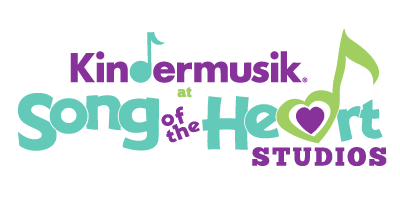Movement activities in a Kindermusik class may take several forms. There are circle or line dances, guided by the educator. There are interpretive dances where we pretend to be an animal, a vehicle, or something more abstract like the wind. There are partner dances and free dances. Fast and slow dances. High and low dances. Stop and go dances. All these activities have several benefits. Let’s go through each of them.
Social Dances: Circle or line dances guided by the educator promote social bonding. We wave at our friends. We partner with other families. We smile across the circle at each other. This allows the children to notice where they are in relationship to others. Not only does it promote socialization but it also helps develop proprioception, spatial processing, visual processing, and auditory processing. There’s a lot going on when you are listening to directions, moving in real time, watching the other dancers, and trying to follow along. Talk about a challenge for their little brains!
Creative Dances: Here’s when your child is encouraged to think about how a mouse skitters, how a cat creeps, how a bear lumbers. How they can mimic their idea of that motion in their own bodies. Perhaps they are asked to sway like a tree in the wind, or how a train chugs slowly, then faster, then slower again. These activities are helping your child make connections between concrete and abstract concepts, develop their imaginations, engage in pretend play, and practice their balance and coordination.
Free Dance: In a free dance a child is encouraged to create their own movement in concert with the music. This is developing their auditory discrimination as they listen to the musical cues and interpret them physically. They have to figure out how to move fast and slow, stop and go, high and low, big and small, and more. Think about the inhibitory control they are gaining as they listen to contrasting musical themes and coming up with new ways to mimic that theme in their own body!
All of these activities are giving the children practice with gross motor and locomotor movement. They’re also increasing your child’s strength, balance, and coordination. And through this playful activity they are releasing endorphins and getting a shot of “Joy Juice”, that natural hormonal cocktail of serotonin, dopamine, and oxytocin. These neurochemicals make them feel loved and safe and joyful.
So when your educator invites you to stand and move with your little one, be sure to throw your inhibitions out the door and fully engage in the activity. You’ll get all these benefits too!

